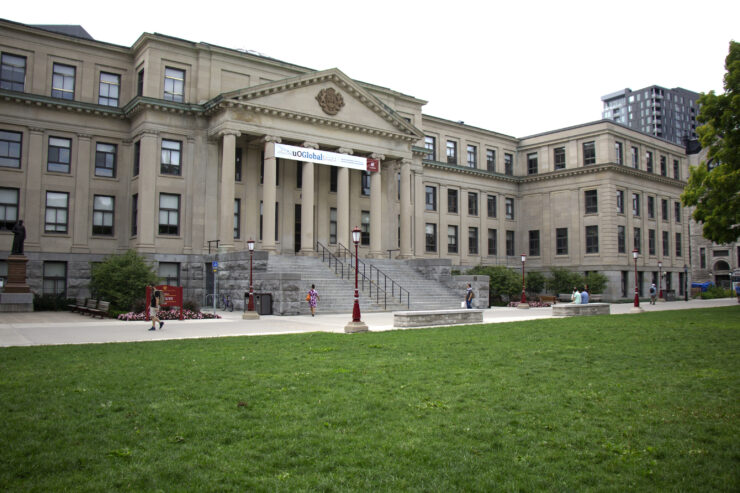U of O researchers and SMATS Traffic Solution partner up to develop public transit smart solutions
When it comes to the heavily debated, politically charged topic of Ottawa’s public transportation, there are horror stories a plenty amongst University of Ottawa students.
Ongoing research coming from the U of O’s Telfer School of Management is looking to change that, by using vast amounts of data from anonymous riders to create an algorithm designed to improve the efficiency of public transportation systems, bus scheduling, and route design.
Professor Bijan Raahemi and U of O masters’ student Shahrzad Jalali are collaborating with industry partner SMATS Traffic Solutions on the research. SMATS is providing support for the research that is aiding in the collection of data which will be fed into Raahemi’s team’s algorithm.
SMATS sensors anonymously detect signals from bus riders’ mobile phones, however, they also pick up a significant amount of noise. Using advanced data mining methods, researchers can cut through the noise and get an understanding of bus ridership patterns. The algorithm utilizes this data in calculations so that at any given time it can be known how many people are waiting at a given bus stop as well as the capacity of buses on route.
The algorithm’s first and most noticeable improvement for commuters will be with dynamically changing schedules. For example, let’s say a bus is scheduled to arrive at a stop every 30 minutes. Now, if there was a delay such as traffic or weather, the next bus might not arrive for 45 minutes. The algorithm, using collected data, will be able to determine if a backup bus that will arrive in 30 minutes should be sent out, which means there will be no additional wait time for riders.
Beyond improving scheduling, the algorithm could also aid in the design of new routes. Understanding the habits of riders from how long they ride, how many transfers they take, and how long they wait can help determine where new routes, stops, and extensions should occur.
Currently, the algorithm is in the process of being optimized. In speaking with the Fulcrum, Jalali says this process is very important because even one extra line of code can change the runtime of the algorithm, which would in turn change how quickly transportation systems could react to real time situations.
According to data obtained from OC Transpo, the transit system serviced 874,275 people with a total of 96.5 million passengers in 2016. The average weekly ridership was 320,000. With such widespread use, Jalali believes that based on the data analytics the situation for these riders can be improved. Both herself and the rest of Raahemi’s team are positive that municipalities and transportation companies alike will be interested in adopting their algorithm.





